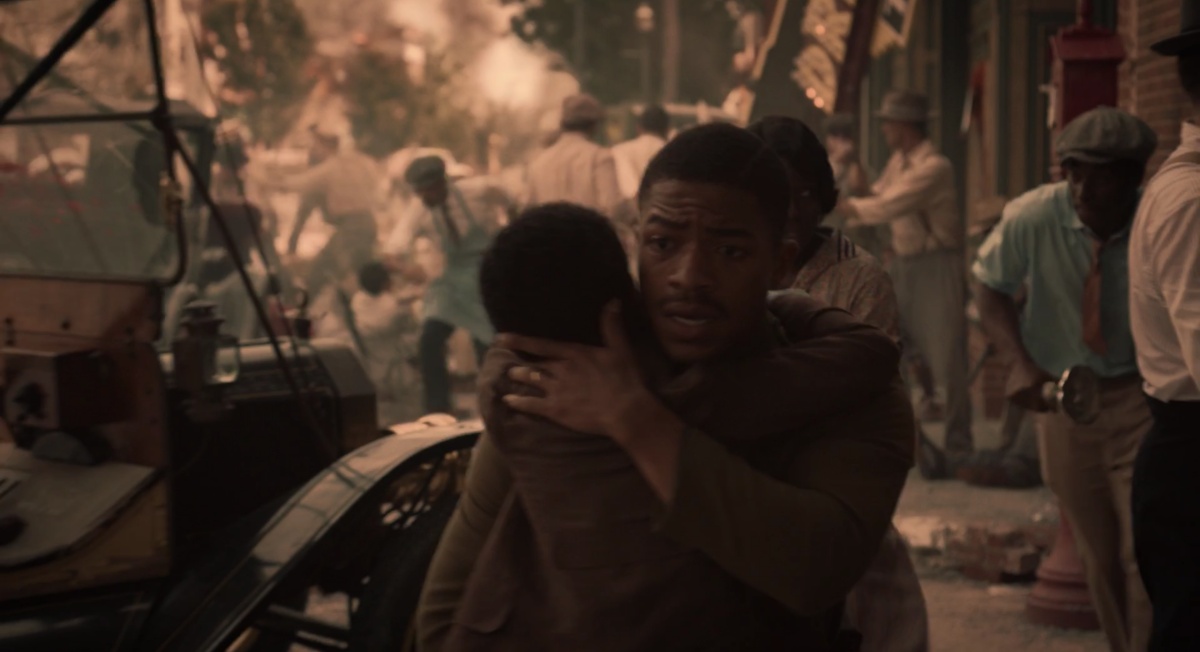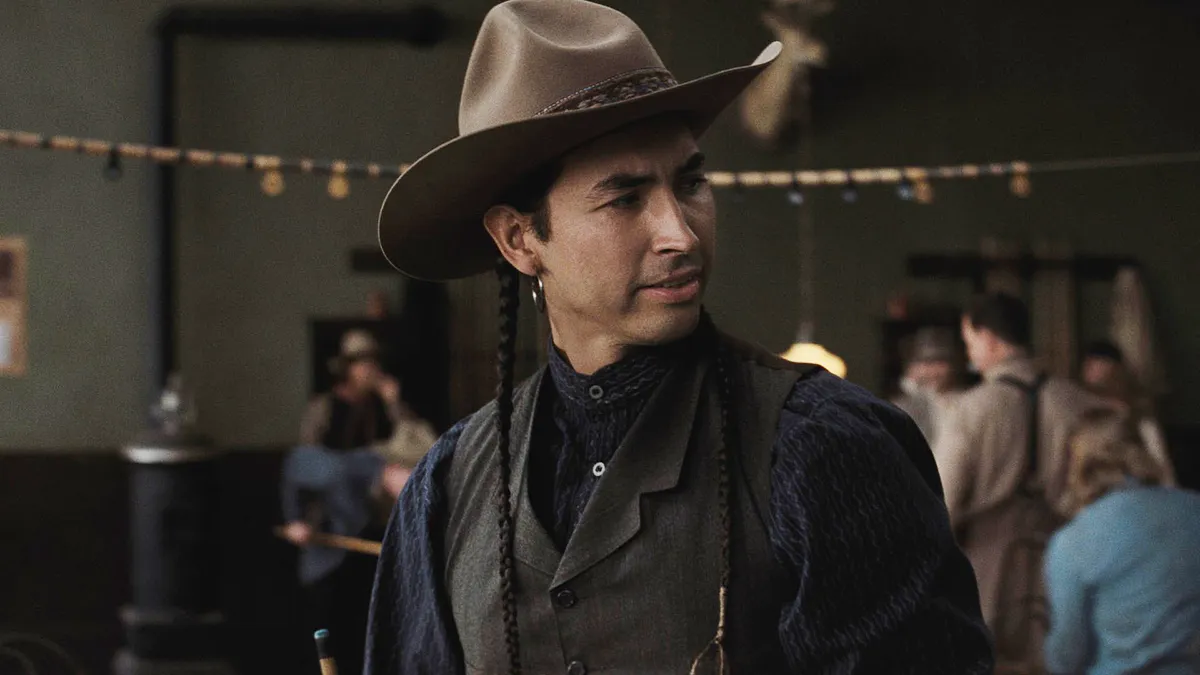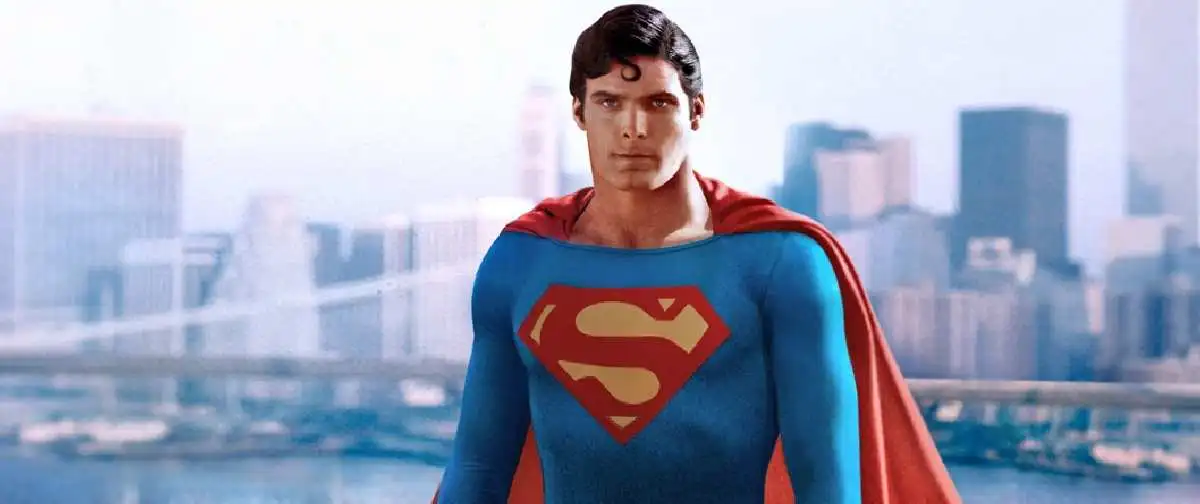Watching a film like Killers of the Flower Moon, even as a non-Native, was a very haunting experience. Unfortunately, this feeling wasn’t limited to the actions on screen, but the disturbing laughter from the audience.
A last-minute vacation detour had me and my partner in Bentonville, Arkansas and Tulsa, Oklahoma the week after Killers of the Flower Moon premiered. Because we were going to be so close to the Osage Nation, we decided to see the movie in Tulsa. While a significant portion of Tulsa sits on Osage land, the Muscogee (Creek) and Cherokee land made up the parts of Tulsa we visited. When the time came to see the movie, we purchased tickets at the Circle Cinema near The Outsiders House. It’s a neat non-profit theater (a thing I didn’t know existed) and local art gallery right off Route 66 and founded in 1928. The vibe, plus the advertisements for an upcoming Arab Film Festival at the theater, was giving nothing but green flags. However, it ended there.
The green flags I’m referring to are the signs I have to look for as a Black woman traveling into unfamiliar spaces. The Greater Houston area is brimming with the ‘isms and phobia, but I know the area. I thought the area and the theater were safe enough at least physically to be. However, in hearing the mostly white audience (as far as I could tell) laugh during violent, non-comedic moments of Killers of the Flower Moon, I was brought back into reality.
Remembering where you are

**SPOILERS ahead for Killers of the Flower Moon**
There’s two particular moments that stood out to me. One came when Ernest Burkhart (Leonardo DiCaprio) passed through a parade and waved to the Pitts Beatty (Gene Jones). Because the U.S. government felt that “full-blooded” Osage couldn’t handle their own money, it appointed conservators over the Osage. Someone appointed Beatty over Mollie Burkhart’s (Lily Gladstone) headrights. What prompted a chuckle from the audience was the nonchalant act of Beatty in full Ku Klux Klan robes jollily striding in the parade. I guess many missed the fact that the first scene of Beatty and Mollie speaking shows a large KKK cavalry illustration hanging behind him. Regardless, I pushed down my fury, chalking it up to uncomfortable laughter. Some people react to terrible things in broad daylight with laughter. In a sort of “who does that?!” sort of way.
The second and louder laughter from the audience came after the Burkharts bombed Mollie’s sister Reta’s (JaNae Collins) home with her family in it. Strap in because it gets fucking worse. Earlier in the film, we saw a newsreel on the 1921 firebombing and massacre of Greenwood and its residents. This inclusion acted to link violence faced by Black and Indigenous people by white Oklahomans for the viewers. Scorsese reinforced this message following the bombing of Reta’s place. After the explosion, the camera follows Ernest stumbling down the street to the rubble of Reta’s home and family. Here, you hear an Osage man cry out something like “Oh no, it’s Tulsa again!” in the darkness. This is your cue (audience) to make that connection. It’s all spelled out for you. Immediately, a bunch of people in my audience met that connection by busting out into laughter.
I too often have had terrible theater-going experiences and I go out of my way to avoid it. So, because people don’t stay off their phones, I haven’t seen a Friday or Saturday night film in almost a decade. But this was next-level awful and something unavoidable. I didn’t have to wait until the end of the film to recognize how little has changed a century later. I felt it there surrounded by people living in a city that burned out 300 and displaced 1,200 Black people. Where the government continues to cheat the living survivors out of reparations. Also, just 1 hour from the real place (Pawhuska) where the Osage murders happened and the victims’ families still live. The reaction from the audience will likely stay with me as much as the movie itself. What’s worse, I’ve since learned I’m not the only person this happened to.
A shared experience of continued dehumanization

The Indigenous-centered pop culture website A Tribe Called Geek made a trigger guide to the film. This was to help warn those sensitive to certain topics about images and themes. In a section about the dehumanization of Indigenous people, Oklahoma native Chelsea Copeland wrote:
This is obvious, right? It’s worse, though. This movie shows that King only saw Natives as walking bank accounts. At one point, he points to a Native passed out on his floor as ‘$25,000’. And the audience in the theater I was in laughed. (It should come as no surprise, but non-Native members of the audience may not why this was offensive or not intended to be funny. This can also be triggering as well as infuriating.)
While he didn’t hear laughter, Elias Gold of Native Media Theory shared a similar sense of dread from his mostly non-Native theater. At the end of the movie, Gold sat there processing the film. Here he heard several ignorant comments from people gathering their things to leave. Gold said one person exclaimed, “Oh man, can you imagine if that was a true story!” Another complained, “Agh, another anti-white movie.”
You didn’t pay attention. This is what Scorsese was trying to do. He was holding up a mirror. The ending! He was trying to do that with the ending.
Part of me wishes these responses surprised me, that even after watching the film depict the banality of white supremacy and the violence acted in its name, I could be completely shocked by these reactions. However, this isn’t even the first time I’ve experienced this callousness after a story about extreme racial violence. After watching Miss Siagon at Houston’s Theater Under the Stars, a similar moment occurred.
Can’t make them drink
In 2019, I watched Miss Saigon live, having never seen it before. A year later, I learned the problematic history and nature of the play, but I was ignorant at the time. When the Vietnam-set musical ended I sat shaken in silence, and felt hollowed out. Yes, the ending was heartbreaking, but my reaction stemmed from the imagery in the midway point through Act 2. The “Fall of Saigon” scene and imagery mirrored images of migrants crossing the Texas-Mexico border. There was no laughter during the scene as far as I could tell. However, the post-show response was unsettling.
We had to exit the theater, and it felt alien to be around the usual excited crowd chatter common after performances. A disorienting discomfort. What really took me out of this surrealish feeling was hearing a comment made by one of the many upper-middle-class, white members of the audience as we all shuffled through the lobby. He said, grinning ear to ear, “I love a good tragedy.” This story was really just entertainment to them. No one who saw the very obvious parallels between Kim’s story and the real-life Kims of Syria, Yemen, or Guatemala would say something so disturbing.
One of the few criticisms about Killer of the Flower Moon was how this film ultimately catered to a non-Native audience. This came from the frustration of Indigenous people about how often major movies centering Indigeneity are made for white people. Still, even with these criticisms, many expressed gratitude about the message of the film and how it didn’t white-wash the history. Scorsese hasn’t been timid about making it very clear, either. He made it in part to tackle the complicity of white people both in Fairfax County and more broadly. And yet, as these and many other experiences show, it’s not sticking for a lot of people no matter how transparent the work and artists are. That’s probably because you have to see people as fully human to consider the horror of what was/is enacted on them in your name.
(featured image: Apple TV+)










Published: Nov 9, 2023 07:08 pm